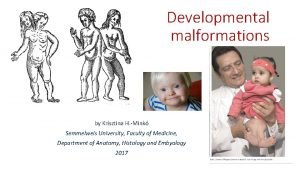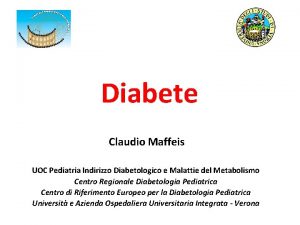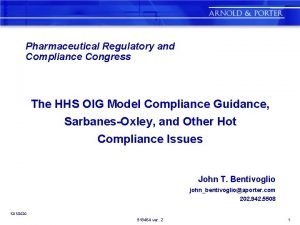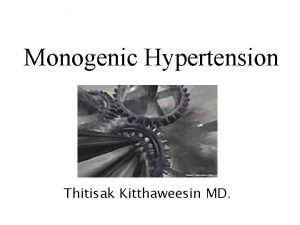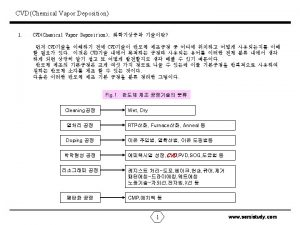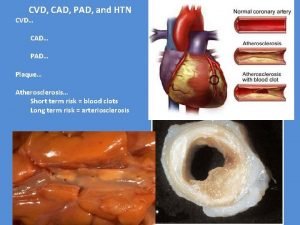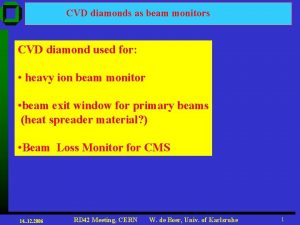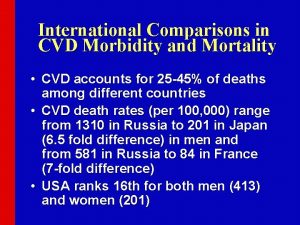Monogenic Causes of CVD in Fars Yalda Congress









































































- Slides: 73

Monogenic Causes of CVD in Fars Yalda Congress October 2013 Reza Malekzadeh M. D Professor of Medicine DDRI/Shariati Hospital /TUMS

Etiology of death In Iran

Trends in the Number of Obese Persons, According to Region

Burden of Disease Attributable to Individual Risk Factors

Hypertension in Iran � Hypertension is a highly prevalent condition in adults in Iran. � >42% of GCS participant (Age >40) are Hypertensive. � Many of the affected individuals are unaware of their disease, an � The rate of control of this disease by antihypertensive medications is very low Malekzadeh et. al J of Hypertension 2013


65% of Pars cohort participant are over weight or obese BMI Group Valid Percent Cumulative Percent Frequency Percent underweight 24 1. 9 Normal 443 34. 6 36. 5 Overweight 504 39. 4 75. 9 Obese 309 24. 1 100. 0 Total 1280 100. 0 Valid

63% of PCP are prehypertensive or hypertensive Gender * HTNGroup Normal blood Prepressure hypertension male Gender female Total Stage 1 HTN Stage 2 HTN Total Count 217 231 101 35 584 % within Gender 37. 2% 39. 6% 17. 3% 6. 0% 100. 0 Count 339 215 100 42 696 % within Gender 48. 7% 30. 9% 14. 4% Count 556 446 201 77 1280 % within Gender 43. 4% 34. 8% 15. 7% 6. 0% 100. 0 %

30% of PCS participant have NASH/NAFLD

Genetic of Metabolic Syndrome �A cluster of highly heritable risk factors known as metabolic syndrome is a growing predisposing factor for development of CAD �While substantial progress has been made in identification of genetic causes of the individual risk factors the underlying genetic factors that unify their association in the metabolic syndrome are not known.

GWAS and Metabolic syndrome � Genome-wide association studies indicate that genetic predisposition contributes to individual susceptibility to NAFLD, and Metabolic syndrome also to its severity. � At least 12 genetic polymorphisms have so far been linked with NAFLD and Metabolic syndrome

Patatin-like phospholipase domain-containing protein 3 [PNPLA 3) � PNPLA 3 is a triacylglycerol hydrolase in both adipose and liver; the Ile 148 Met substitution decreases the affinity of substrates to PNPLA 3. � Mice with hepatic overexpression of mutant Pnpla 3 have increased formation of fatty acids and triacylglycerol, impaired hydrolysis of triacylglycerol, and relative depletion of triacylglycerol long-chain polyunsaturated fatty acids. �.

PNPLA 3 varient � Humans carrying this gene variant also have lower secretion of large, triglyceride-rich very low density lipoproteins, and decreased serum adiponectin levels; � Influence lipid pathways of lipolysis or lipogenesis and cholesterol turnover and is the most commonly reported genetic susceptibility in Metabolic syndrome and NAFLD

Other genetic susceptibility Loci for Metabolic Syndrome are: � Apolipoprotein � Adiponectin. � PPARG C‑III [APOC 3]. polymorphisms has been associated with obesity. � PPARG SNP has been associated with Nafld possibly via low serum adiponectin levels and insulin resistance. � Val 227 Ala PPARA polymorphism, which is fairly common in Asians, might protect against NASH; the same polymorphism is associated with low levels of serum cholesterol and protection from CVD.

Mapping of the susceptibility genes for coronary artery disease (CAD) is constrained by üThe lack of perfect co-segregation of genetic markers with inheritance of the trait, ügenetic heterogeneity, üincomplete penetrance of the risk-allele, ü High phenocopy Rates

Next generation sequencing �The advent of next generation sequencing has provided an unprecedented opportunity for identification of rare variants with moderate to large effects.

Typical Gene Organization Molecular Biology Typical Gene Organization Regulatory unit Core promoter -35 Transcriptional unit -10 5' Ex 1 Enhancer CCAAT box Silencer TATA box Ex 2 3' Ex 3 Transcription RNA: AAAA CAP m. RNA: Protein: CAP AAAA NH 2 - Met - aa-aa-aa-aa. . . aa - COOH 6

Founder mutations that segregate with extreme phenotypes �Identification of rare mutations that account for extreme phenotypes in outlier populations. �In this setting the possibility of identifying founder mutations that segregate with extreme phenotypes is dramatically increased

Outlier families with Metabolic Syndrome �Outlier families from a community with high prevalence of a cluster of traits, including early onset CAD, central obesity, hypertension and diabetes. �We used linkage analysis and whole exome sequencing to identify the disease-causing gene.

Selective genotyping of outlier families �In linkage analysis for quantitative traits, extreme individuals provide a relatively large contribution to the test statistic. �Indeed, this is the basis of selective genotyping to maximise power while minimising costs

Study of patients family � � We invited Dr Mani one of SUMS graduate to study this patient family. is now the associate Professor of Medicine (Cardiology) and of Genetics and director, Cardiovascular Genetics Program at Yale university at New Haven, CT , USA.

First family

History � 48 y/o farmer presented with MI � CAD risk factors included hypertension, hyperlipidemia, and diabetes mellitus; he had never smoked and his body mass index (BMI) was 24. � Evaluation revealed critical stenosis of all three major coronary arteries, which led to coronary artery bypass grafting.

Follow up � His course was complicated by progressive atherosclerosis of the grafts and internal carotid arteries. � At age 62, he suffered a low-impact hip fracture and was found to have very low bone mineral density of unknown cause (z score of – 3. 4 at the femoral neck of his intact hip). � He died from a stroke at age 72.

Family among 58 blood relatives of the index case � 28 were diagnosed with early CAD (MI, angina, or sudden cardiac death) at or before age 50 (men) or 55 (women) (next slide). �Of these, 23 have died from CAD (mean age of death, 52 years).

Moezabad Project

Moezabad Kindred

Marked clustering of early CAD � The marked clustering of early CAD and risk factors in this kindred suggests a strong genetic component. � Among sib ships in which all subjects are beyond the age threshold for onset of CAD, � The offspring of single affected parents yielded 17 affected and 15 unaffected subjects, and male-to male transmission is present; in addition, the union of two affected first cousins yielded six affected and one unaffected offspring.


Family with autosomal dominant early CAD �A family with autosomal dominant early CAD, features of the metabolic syndrome (hyperlipidemia, hypertension, and diabetes), and osteoporosis. �These results link a single gene defect in Wnt signaling to CAD and multiple cardiovascular risk factors.






Early CAD is transmitted as a highly penetrant autosomal dominant trait � LDL levels are strongly bimodal in the kindred, with all members having either high levels (157 to 195 mg/dl) or low levels (92 to 105 mg/dl), and these levels co-segregate with early CAD. � This extreme familial clustering and segregation of phenotypes within the kindred is unlikely to be explained by chance or multifactorial determination and provides strong evidence that early CAD is transmitted as a highly penetrant autosomal dominant trait

Whole Exome analysis identifies �LRP 6 gene mutation as the disease-causing

LRP 6 R 611 C �A rare non-conservative mutation in Wnt coreceptor LRP 6 (LRP 6 R 611 C) has been shown to underlie autosomal dominant early onset coronary artery disease, type 2 diabetes, and metabolic syndrome.

LRP 6 Mutation in a Family with Early Coronary Disease and Metabolic Risk Factors In Fars Iran �LRP 6 mutation and early CAD with high LDL, high triglycerides, hypertension, diabetes, and low bone density. �Most mutation carriers over age 45 meet criteria for the metabolic syndrome. � Mean LDL levels among LRP 6 mutation carriers are 170 mg/dl, versus a mean level Mani A et al Science. 2007 March 2; 315(5816): 1278– 1282


Comparison of phenotypes in carriers and non -carriers of LRPR 611 C in Iran. Mani A et al Science. 2007 March 2; 315(5816): 1278– 1282

Potential therapeutic target for insulin resistance. �LRP 6 R 611 C mutation diminishes TCF 7 L 2 dependent transcription of the IR while it increases the stability of IGFR and enhances m. TORC 1 activity. �These findings identify the Wnt / LRP 6/TCF 7 L 2 axis as a regulator of glucose metabolism and a potential therapeutic target for insulin resistance.

Wnt signaling genes AND Metabolic Syndrome �Common genetic variations in Wnt signaling genes have been associated with metabolic syndrome and diabetes by mechanisms that are poorly understood.

Study of Wnt and Insulin signaling pathway in Skeletal muscle and skin fibroblast of healthy and LRP 6 carrier �LRP 6 mutation carriers exhibited hyperinsulinemia and reduced insulin sensitivity compared to noncarrier relatives in response to oral glucose ingestion. �A significant decline in tissue expression of the insulin receptor and insulin signaling activity. �These findings identify the Wnt/LRP 6/TCF 7 L 2 axis as a regulator of glucose metabolism and a potential therapeutic target for insulin resistance.

Schematic of Wnt /LRP 6 Signaling, Its Role in Regulation of IR and IGFR Ubiquitination, and the Effect of LRP 6 Mutation on These Functions

Published n Cell Metabolism Journal 2013

Shirazian LRP 6 Mutation �Hypertension and diabetes and NAFLD in this family typically appear in middle age, at ages that could easily be mistaken for “garden variety” forms of these risk factors. �The combined effects of these risk factors that account for the very high cardiovascular risk to mutation carriers Mani A et al Science. 2007 March 2; 315(5816): 1278– 1282

2 nd family

Study of 3 large outlier kindreds with METBOL SX. from a community in South Iran The community was notable for its high prevalence of central obesity associated with early onset Fatty liver, CAD, severe hypertension and type II diabetes. �In each kindred, these traits co-segregated in a pattern suggesting causation by a highly penetrant autosomal dominant mutation

Selective genotyping of outlier families �In linkage analysis for quantitative traits, extreme individuals provide a relatively large contribution to the test statistic. �Indeed, this is the basis of selective genotyping to maximise power while minimising costs

Mutation in Dyrk 1 B co-segregates with early CAD, obesity, DM 2, andhypertension

Advance CAD �All affected family members with CAD who were recruited had greater than 60% stenosis of one or more epicardial vessels, and or percutaneous coronary intervention (PCI), or coronary artery bypass surgery. � Genomic DNA was prepared by phenol chloroform extraction.

Rare alleles &metabolic RF �Rare alleles may underlie association of a cluster of metabolic risk factors of CAD, widely known as metabolic syndrome.

Whole Exome analysis identifies �Dyrk 1 B mutation as the diseasecausing gene

A founder mutation in Dyrk 1 B, substituting cysteine for arginine 102 �In the highly conserved kinase-like domain was identified in 3 independently recruited large kindreds. �The mutation precisely co-segregated with these traits in all affected members of the kindreds and was absent in related and unrelated controls.

Dual specificity tyrosine-phosphorylationregulated kinase 1 a (Dyrk 1 a) �The Dyrk 1 a gene has been implicated in Down Syndrome �Mutations of mnb and Dyrk 1 a in Drosophila and mammals show neural phenotypes defects in neuroblasts proliferation and brain development. �Human patients with truncated mutations in the Dyrk 1 a gene also show microcephaly.

DYRK 1 A �Is a kinase overexpressed in Down syndrome that can activate the STAT 3 pathway, which is involved in lecithin: cholesterol acyltransferase expression. �Dyrk 1 a over-expression on decreased LCAT activity, plasma Apo A-I and HDL-cholesterol levels, and increased hepatic SHP 2 activation.

Dyrk 1 B �Belongs to the Dyrk family of proteins, a group of evolutionarily conserved protein kinases that are involved in cell differentiation, survival, and proliferation. �Has been linked to type II diabetes and metabolic syndrome in GWAS studies

Dyrk 1 B as a master regulator of metabolism and it mutation lead to �Central obesity, fatty liver, early onset CAD, hypertension and diabetes. �These findings identify Dyrk 1 B as a promising target for the development of novel therapeutics directed against these traits.

Dyrk 1 a Regulates Food Intake date, however, the effects of mnb and Dyrk 1 a upon food intake have not been described. �To �Dyrk 1 a Regulates Food Intake through the Sir 2 -FOXO-s. NPF/NPY Pathway in Drosophila and Mammals

Functional characterization of the disease gene �Revealed that wild-type Dyrk 1 B inhibits shh and Wnt signaling pathways and consequently enhances adipogenesis. �Furthermore, Dyrk 1 B promoted expression of the key gluconeogenic enzyme G 6 pase. � The R 102 C allele exhibited gain of function activities by potentiating these effects

Main Functions of Dryk 1 B gene. Association between impaired Wnt signaling, adipogenesis and metabolic traits �Adipogenesis �Glucose homoeostasis

Altered function of Dryk 1 B results in �Autosomal dominant obesity, �Early onset metabolic traits �Early onset CAD

A second Dyrk 1 B allele (H 90 P) �A second Dyrk 1 B allele (H 90 P) is associated with obesity and diabetes

This study establishes a � Causal link between Dyrk 1 BR 102 C mutation and central obesity, early onset CAD, hypertension and type II diabetes. � The evidence linking Dyrk 1 BR 102 C with early onset CAD and metabolic traits primarily comes from � (1) the finding of an identical nonconservative mutation on a shared haplotype background � (2) the biochemical data, indicating that the mutation alters two important functions of the encoded protein.

Comparison of metabolic traits in Dyrk 1 BR 102 C carriers and non-carriers

How you can prevent CVD: �Genes are important! �But good diet and life style can save you even if you have a bad gene! �Try to have a good life style and eat healthy diet

Action necessary through policy formulation and implementation �Reduce smoking, �Decrease alcohol consumption, �Decrease consumption of trans-fat �Reduce salt consumption. �Increase physical activity. �Promotion of healthy diet

Action necessary through policy formulation and implementation �Reduce smoking, �Decrease alcohol consumption, �Decrease consumption of trans-fat �Reduce salt consumption. �Increase physical activity. �Promotion of healthy diet

Lifetime Risk of Death from Cardiovascular Disease among Black Men and White Men at 55 Years of Age


End 1/11/2010 Malekzadeh R DDRC/TUMS 72

Thank you
 Syndaktilia
Syndaktilia Claudio maffeis
Claudio maffeis Yalda kaveh
Yalda kaveh Alireza yalda
Alireza yalda Alireza yalda
Alireza yalda Shortlyaia
Shortlyaia Yalda edalat
Yalda edalat Pvd
Pvd Pvd vs cvd
Pvd vs cvd Cvd.exe commvault
Cvd.exe commvault Cvd vs pvd
Cvd vs pvd Pvd vs cvd
Pvd vs cvd Proximate and ultimate causes of behaviour
Proximate and ultimate causes of behaviour Ultimate vs proximate causation
Ultimate vs proximate causation The organization of congress chapter 5
The organization of congress chapter 5 General grand masonic congress
General grand masonic congress Siam physics congress
Siam physics congress What was congress's plan for reconstruction
What was congress's plan for reconstruction What are the powers of congress
What are the powers of congress Congress of vienna vs treaty of versailles
Congress of vienna vs treaty of versailles The congress of vienna meets
The congress of vienna meets Why did johnson and congress clash over reconstruction
Why did johnson and congress clash over reconstruction What was the goal of the first continental congress?
What was the goal of the first continental congress? Chapter 10 section 4 the members of congress
Chapter 10 section 4 the members of congress Ieee sections congress
Ieee sections congress Library of congress cutter table
Library of congress cutter table Parliamentary vs presidential venn diagram
Parliamentary vs presidential venn diagram Pharmaceutical compliance congress
Pharmaceutical compliance congress Congress legislative branch
Congress legislative branch Law enforcement mental health and wellness act
Law enforcement mental health and wellness act Eucharistic congress dublin 1932
Eucharistic congress dublin 1932 Heading
Heading Chapter 23 section 5 the congress of vienna
Chapter 23 section 5 the congress of vienna Function of congress
Function of congress Who wrote the ffa creed? when was it adopted?
Who wrote the ffa creed? when was it adopted? Does congress have the power to have no mail on saturdays
Does congress have the power to have no mail on saturdays Wwii
Wwii Congress at work chapter 7
Congress at work chapter 7 Chapter 23 section 5 the congress of vienna pdf
Chapter 23 section 5 the congress of vienna pdf Enumerated powers vs implied powers
Enumerated powers vs implied powers Chapter 11 powers of congress
Chapter 11 powers of congress Express vs implied powers
Express vs implied powers Nonlegislative powers of congress
Nonlegislative powers of congress Congress of vienna quiz
Congress of vienna quiz Library of congress flickr
Library of congress flickr Articles of confederation acrostic
Articles of confederation acrostic Conference center valencia
Conference center valencia 505 congress st
505 congress st Informal powers
Informal powers Chapter 7 section 5 the congress of vienna
Chapter 7 section 5 the congress of vienna National children's science congress projects ideas
National children's science congress projects ideas International chemical congress of pacific basin societies
International chemical congress of pacific basin societies First continental congress convenes
First continental congress convenes Congress of vienna worksheet
Congress of vienna worksheet Lc cutter table
Lc cutter table Oig pharma compliance guidance
Oig pharma compliance guidance Tema nazionale fidapa 2021
Tema nazionale fidapa 2021 Chapter 23 section 5 the congress of vienna
Chapter 23 section 5 the congress of vienna Section 1 quiz congress organizes
Section 1 quiz congress organizes Congress of vienna conservatism
Congress of vienna conservatism Congress informal powers
Congress informal powers House of representatives gym
House of representatives gym Library of congress
Library of congress Lesson 1 - the structure of congress
Lesson 1 - the structure of congress Congress of vienna map before and after
Congress of vienna map before and after Chapter 12 section 1 congress organizes
Chapter 12 section 1 congress organizes Why did robber barons bribe people in congress?
Why did robber barons bribe people in congress? Congress per state
Congress per state Didn't let congress enforce its laws
Didn't let congress enforce its laws The organization of congress chapter 5
The organization of congress chapter 5 The federal court system chapter 11 answer key
The federal court system chapter 11 answer key First continental congress
First continental congress Pharmaceutical regulatory and compliance congress
Pharmaceutical regulatory and compliance congress Congress formal and informal powers
Congress formal and informal powers
